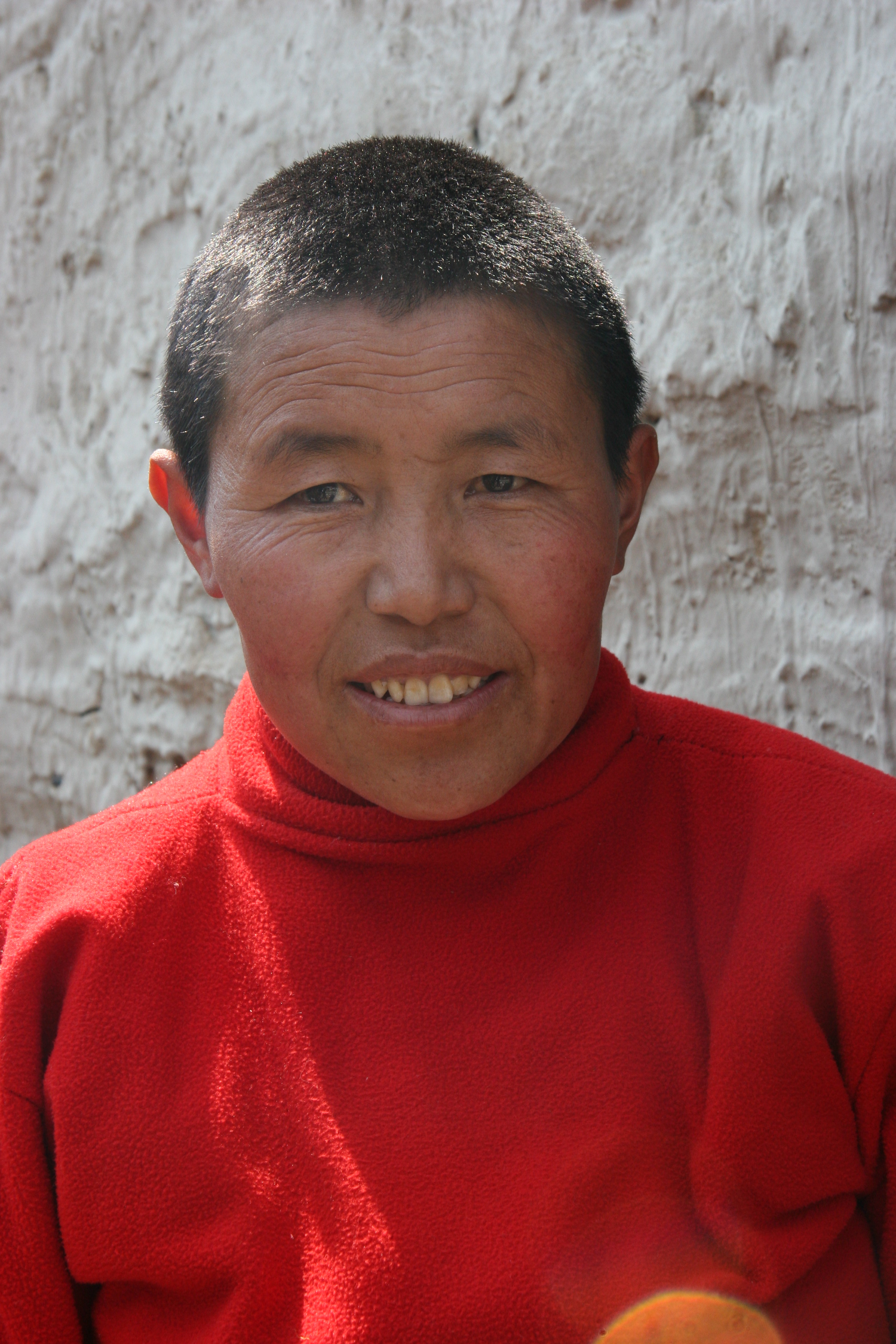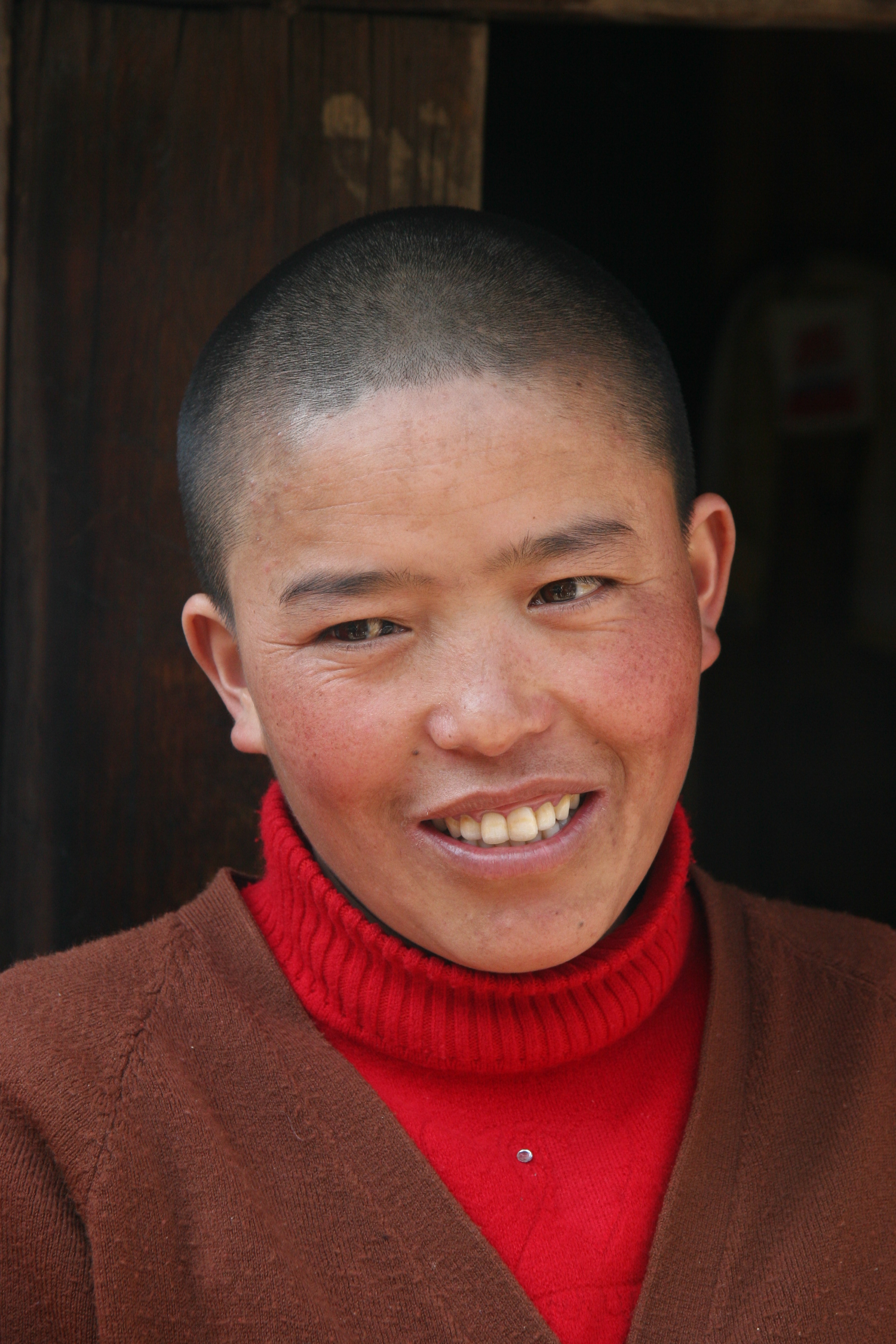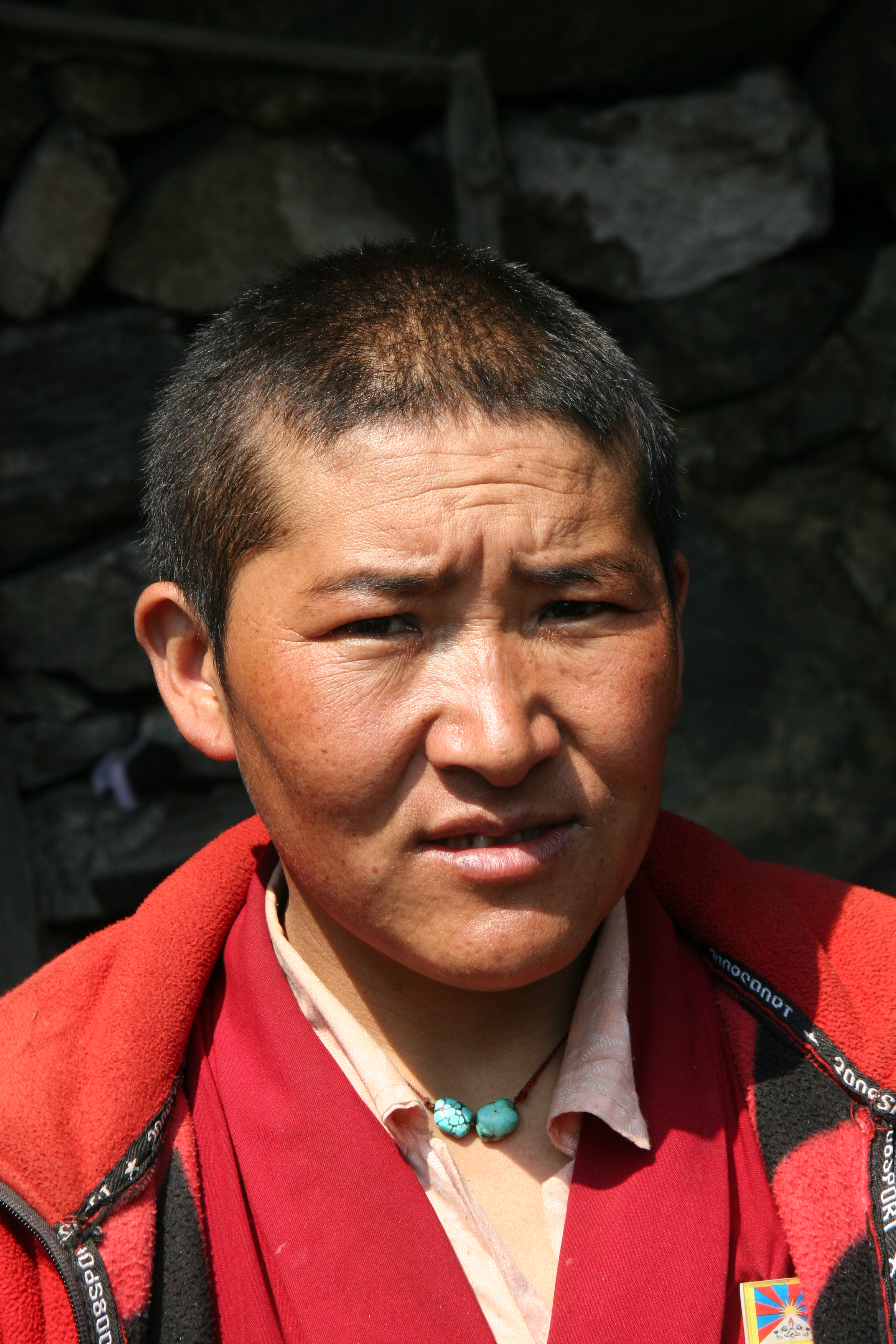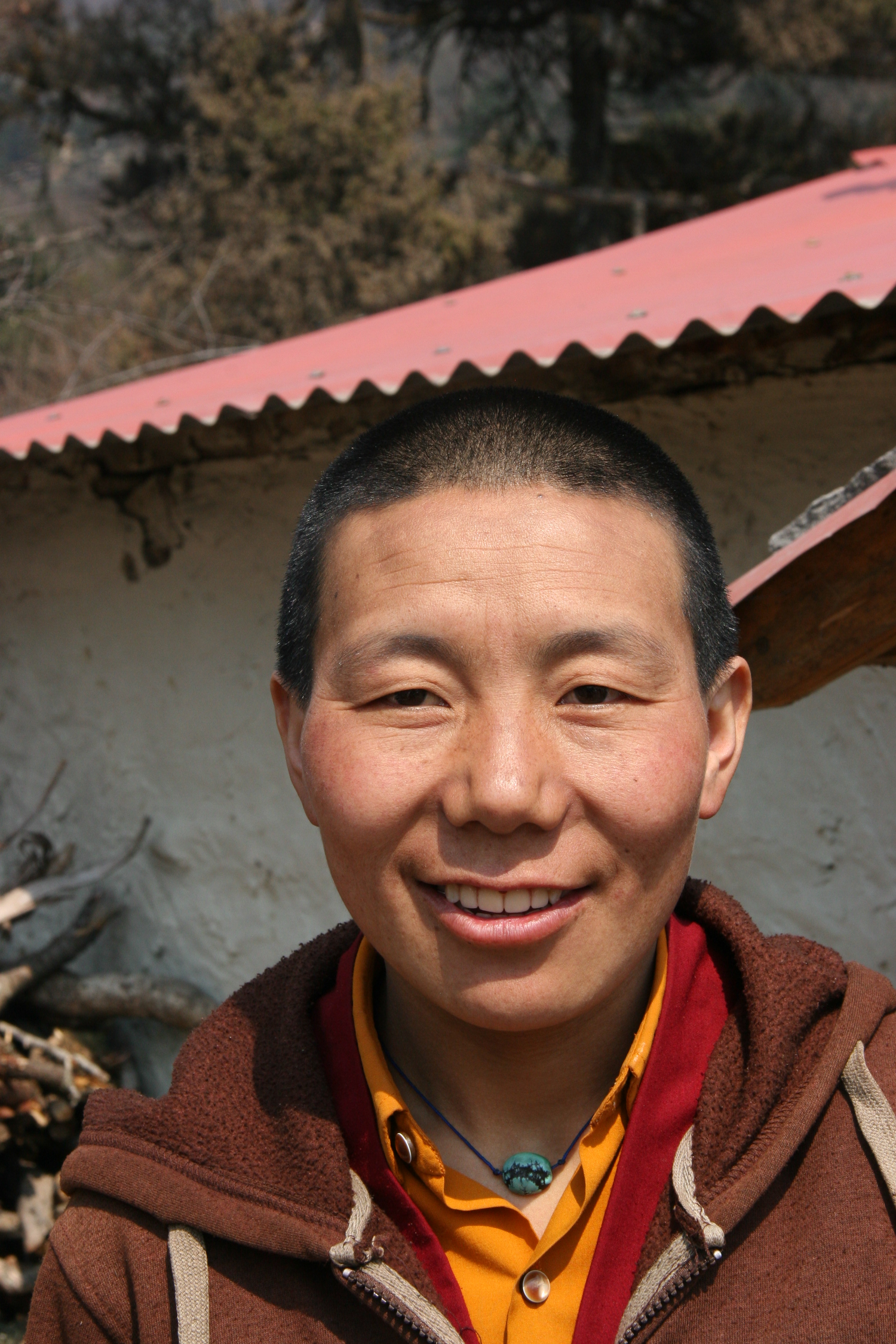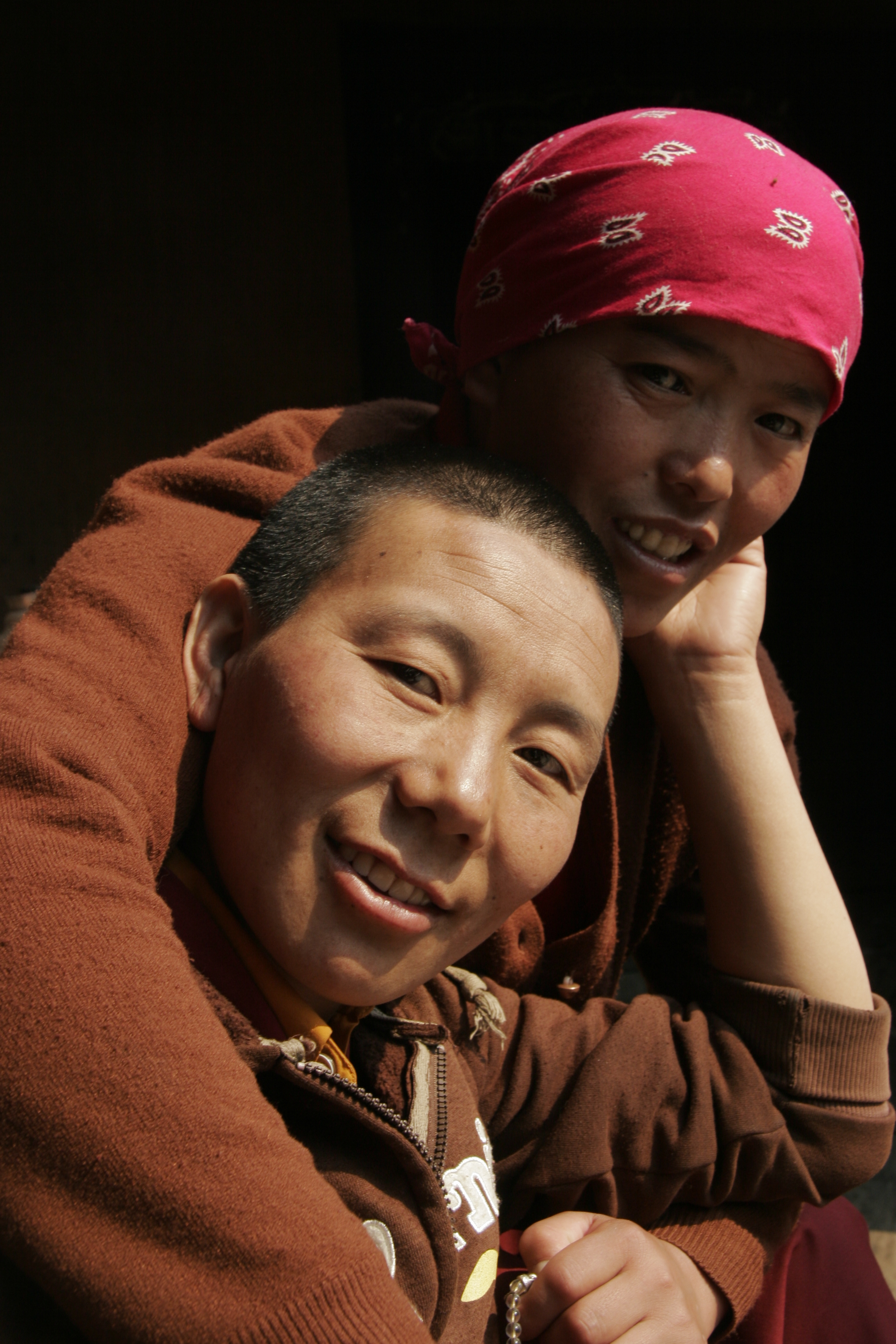“Buddhism anchors the culture identity of Tibetans, Lobas and Sherpas and by supporting a nun so she can study the dharma you are supporting the high Himalayan communities from the soul up, in a way that other more corporal forms of aid never could.”
In the fall of 2004, while leading a trek, I was searching for a peaceful and remote Buddhist convent to arrange for a puja for my recently deceased brother-in-law. Our guide took us down a secluded path to a convent in tall pines lying in the shadow of Everest. The nuns welcomed us into their historic Prayer Hall with its beautiful works of art. They shared what little they had after performing the ‘puja’. As we looked across the convent we realized it was in desperate need of repair and restoration…broken windows, leaking roofs, lack of sanitary facilities, drinking water and no heating sources in their stone huts—their cook stove was made of welded cooking oil cans. Most of the nuns were suffering from respiratory infections brought on by the cold, inclement weather.
We made a vow to change these deplorable conditions and the lives of these beautiful, dedicated women.
Nuns from Tibet choose to accept the challenge of crossing the perilous, snow covered peaks and treacherous ascents of the 22,000 foot Nangpa La to seek asylum at Deboche and be with Deboche’s head nun and spiritual leader, Ani Nawang Pema. She was a well known Buddhist practitioner who spent some 51 years in solitary retreat. She accumulated great merit and powerful wisdom from decades of meditation and ministry to fellow nuns and the wider international and local communities.
The nuns of Deboche are considered ceremonial nuns who perform ‘pujas’ or religious ceremonies throughout the Khumbu. They start each day with prayers for the well being of all sentient beings..that they may find happiness through compassion and loving kindness. The nuns have voiced a desire for further monastic training so that they may become teachers and learned mediators. By rebuilding Deboche and creating a teaching/meditation facility, these nuns and other dedicated students will be able to achieve life long goals and preserve their Tibetan/Sherpa culture and Buddhist traditions.
“During the winter and spring of 2009, I was fortunate enough to spend about four months at Deboche Nunnery as part of a research grant. Ani Pema was in retreat at the time, but nonetheless took me under her wing. The depth of her warm heart and ability to know (without even seeing her in person) the obstacles that arose and the corresponding emotions I felt regarding research touched me deeply. A seed had been planted without my knowing and would result in years of study and my ordination as a Buddhist nun.
What a simple and beautiful life the nuns live. How content and kind they are, yet so hospitable and open-minded to all the foreigners who show up (along with their strange customs and culture) looking for something ineffable but not quite sure what it is or why we are so curious. The spacious environment and extreme beauty of the Khumbu Himalayas coupled with the harshness of life in such a climate provides the perfect setting for reflection. While walking in the mountains amongst so many places of pilgrimage and spiritual practice, one naturally becomes curious about one’s own mind and its true nature. Meeting the Deboche nuns, who have dedicated their lives to finding the Buddha that we all carry within us, can be life changing. Certainly it was for myself and also many other travelers, mountaineers and pilgrims who visit this region.”



